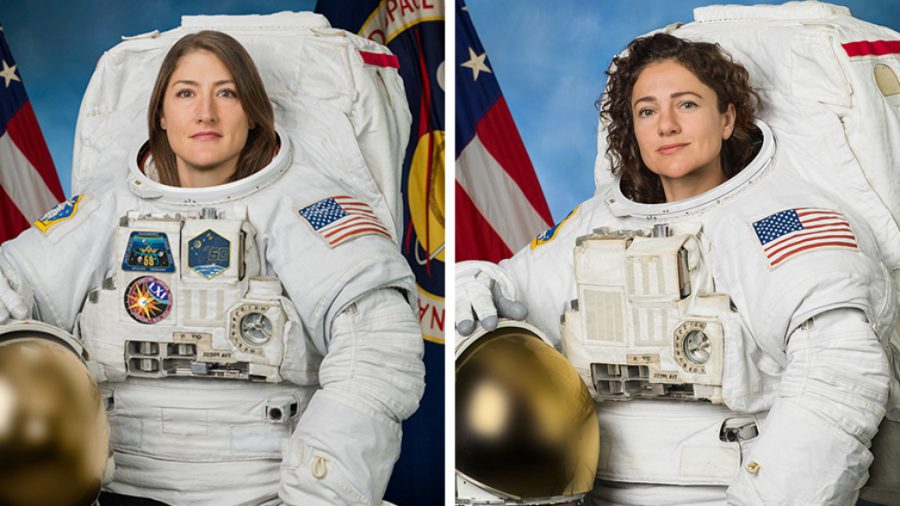While not a hazard to the space station itself, the broken power unit was the cause of other, scheduled spacewalks to be postponed.
Astronauts, including Koch and Meir again, could now replace all of the old batteries that power the space station with lithium-ion ones.
Both women also hope to become some of the first female astronauts on the moon.
Notable events that happened during the walk included a five-minute call with President Donald Trump and Vice President Mike Pence.
The president congratulated the two astronauts on their historic achievement, and called them brave.
He lauded them for being the first women to take a spacewalk outside the station, but Meir corrected him and mentioned that there have been other women who have done this before, but never without a man.
A big point of discussion surrounding this spacewalk and female astronauts in general is what kind of physical characteristics are needed to complete spacewalks, do repairs in space and wear the generally bulky and constraining spacesuits.
An earlier all-female spacewalk, which was supposed to feature Koch and fellow astronaut Anne McClain, was planned for earlier this year in March, but got delayed to lack of proper-fitting spacesuit components.
A common misconception that is starting to get cleared up now is how spacewalks and repairs are meant for men to complete, due to their strength and size.
But this is not necessarily true.
“These repairs and tasks can be performed by anyone in the astronaut corps, that’s for sure,” former NASA deputy administrator Dava Newman said to The Verge. “That is if they’re in the right suit.”
Newman is currently working on a new spacesuit at the Massachusetts Institute of Technology.
Spacesuits basically imitate small spaceships around a person’s body.
They have to be flexible enough to allow human movement and work, but also strong enough to provide enough pressurized gas inside the suit in order for humans to be able to function in space.
Current suits used by the International Space Station have been around since the 1970s, and they feature a shell-like component that fits the astronaut’s torso.
The other parts of the suit then get attached to this shell. Improperly fitting torsos could be the difference between a successful space mission and a failed one.
While there are plenty of torso sizes available for spacesuits, there are not as many smaller ones, because the 1970s design took bulky technology inside the suit into account.
However, NASA is working to produce new spacesuit designs, which would offer more torso sizes to accommodate a larger variety of body types, and will hopefully be easier to move around in.
The organization hopes to accomplish this by the next moon walk, planned for 2024.
It takes lots of strength and training to get comfortable enough to wear the current NASA spacesuits and do a spacewalk, but with six years of training, Koch and Meir were up to the challenge.
With this unprecedented spacewalk, more doors will open up to present and future women interested in conquering space, the moon, Mars and the rest of the galaxy.








